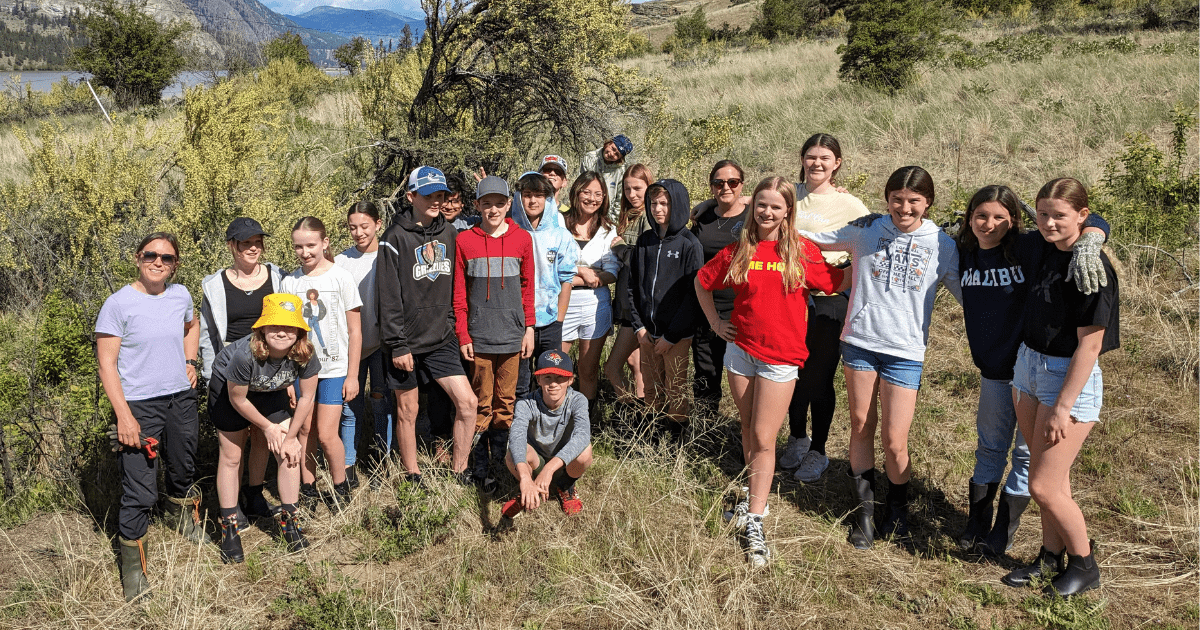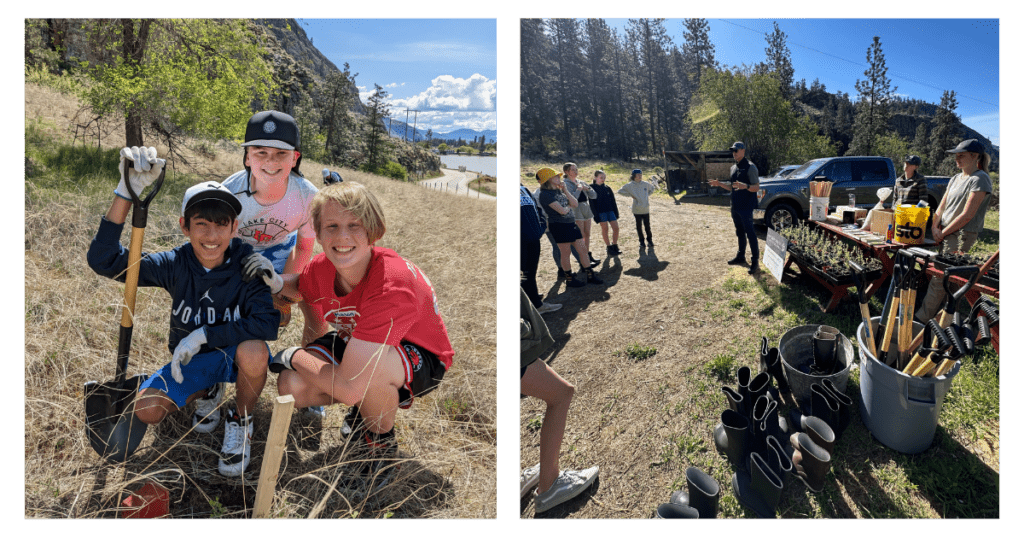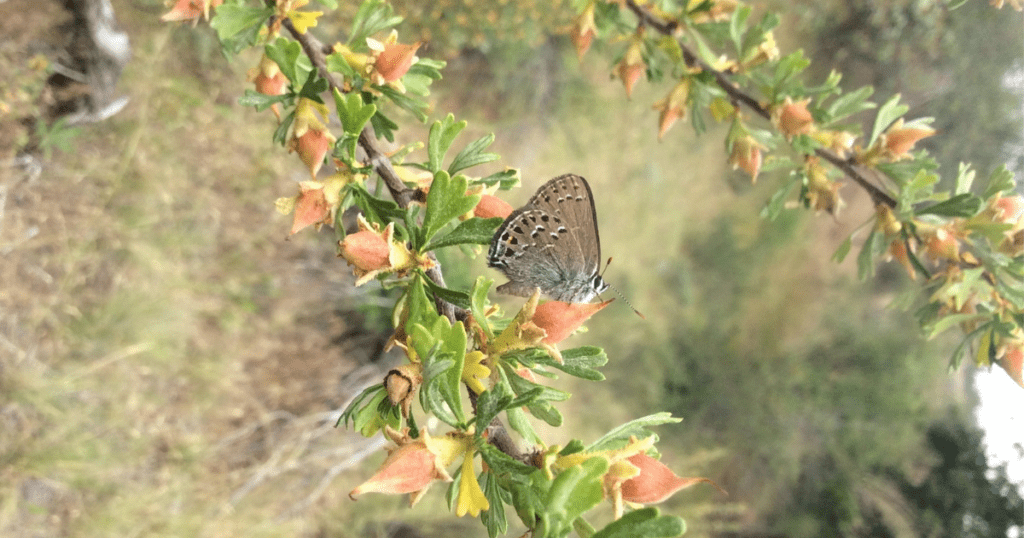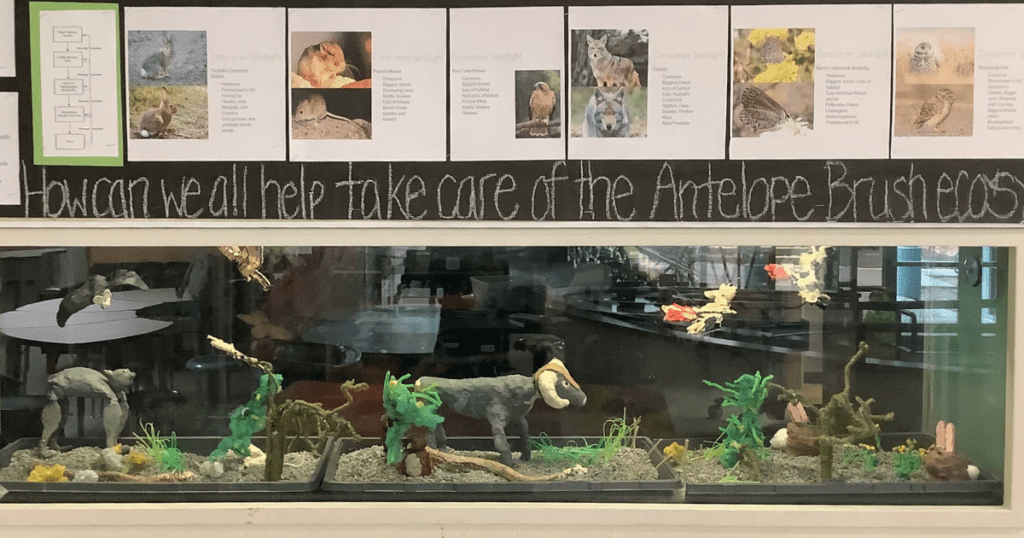
For the past year, the Okanagan community has come together to empower the next generation of outdoor stewards and work to restore Antelope-brush ecosystems. As one of BC’s rarest and most endangered ecosystems with a mere 7,500 hectares left intact in the South Okanagan, it is crucial to inspire youth to understand the significance of the ecosystem and take action to protect it.
Through a pilot project organized by Allison Dietrich, the Okanagan Similkameen School District, and the Okanagan Skaha School District, upwards of 200 students got their hands dirty with immersive, land-based conservation and stewardship experiences. The project is a collaboration with several organizations and First Nations partners, including the Nature Trust of BC, the Osoyoos Desert Society, the Okanagan and Similkameen Invasive Species Society (OASISS), the Penticton Indian Band, and the South Okanagan Conservation Fund.

Left: Students pose happily next to their newly installed Antelope brush plant. Right: Alex Thomson teaches students about the Antelope-brush ecosystem.
As a land conservation organization with several conservation areas that encompass the Antelope-brush ecosystem, The Nature Trust was proud to support this initiative by leading hands-on stewardship days for youth this past year. Students learned about Antelope-brush from our Okanagan Field Crew, and gained stewardship experience through planting, invasive species treatment, collecting seeds, and more.
“Through this project, we are empowering future generations to care about species at risk, climate change, and the ecosystems that surround them. Kids are learning at a young age how to care for their local ecosystems and why it’s important. Importantly, we are seeing students who may struggle in a traditional indoor classroom setting come out of their shell and be excited about learning on the land.” said Alex Thomson, Okanagan Conservation Field Operations Technician with The Nature Trust.
For endangered ecosystems like that of the Antelope-brush, an intergenerational approach to its conservation is essential for its survival. The Okanagan Similkameen Conservation Alliance reports that a staggering 68% of Southern Okanagan Antelope-brush habitat has been destroyed since 1938. Upwards of 20 provincially and federally protected species rely on the Antelope-brush ecosystem for their survival, such as the Red-listed Behr’s Hairstreak butterfly and Pallid bat.
The Behr’s Hairstreak butterfly is an Antelope-brush obligate, meaning Antelope-brush is needed for its survival; protecting the habitat ensures the entire ecosystem can thrive. The destruction is primarily due to urban and agricultural development in the region, making increased education important to protecting the remaining habitat.

The Red-listed Behr’s Hairstreak butterfly
The impact of students getting outside and having a tangible impact is unparalleled, according to teachers like Dee Simpson, a grade 7 teacher at Tuc El Nuit Elementary:
“My classroom looks like any other classroom in the world. We can teach about the ecosystem, talk about it, and they can research it, but it’s nowhere near as valuable as when they’re going out there themselves and learning about the land on the land. For them, it makes it all the more real.”
Not only has Simpson’s class participated in outreach initiatives during the spring, but they have worked year-round to support Antelope-brush conservation and education. Her class successfully germinated Antelope-brush seeds that were collected by The Nature Trust’s Okanagan Field Crew from our conservation areas to be planted on-site. Plus, they created an Antelope-brush ecosystem diorama as a class, which is on display to educate the entire school about the importance of the local ecosystem.
“My hope as a teacher is that I’m empowering my students and showing them ways they can help,” said Simpson, “There’s a lot of climate anxiety, but I choose to focus on ways to be a part of the solution. I hope the students leave feeling hopeful and positive, and know that together we can have an impact as a result of our efforts.”

Antelope-brush diorama and outreach display created by Dee Simpson’s class.
The Nature Trust is able to participate in projects like these thanks to the generosity of donors like you. To support our Okanagan Field Crew and other land management activities, please consider donating today and designating “Land Management”.
 By Dominique Bowden
By Dominique Bowden

